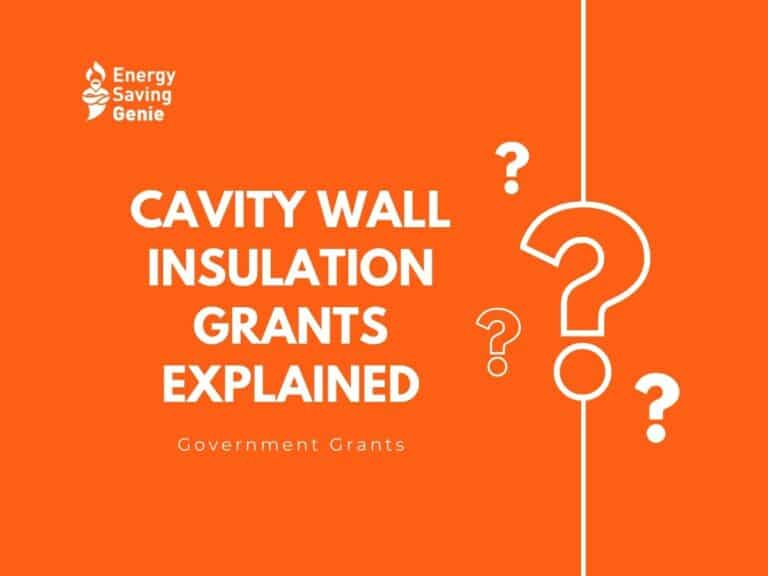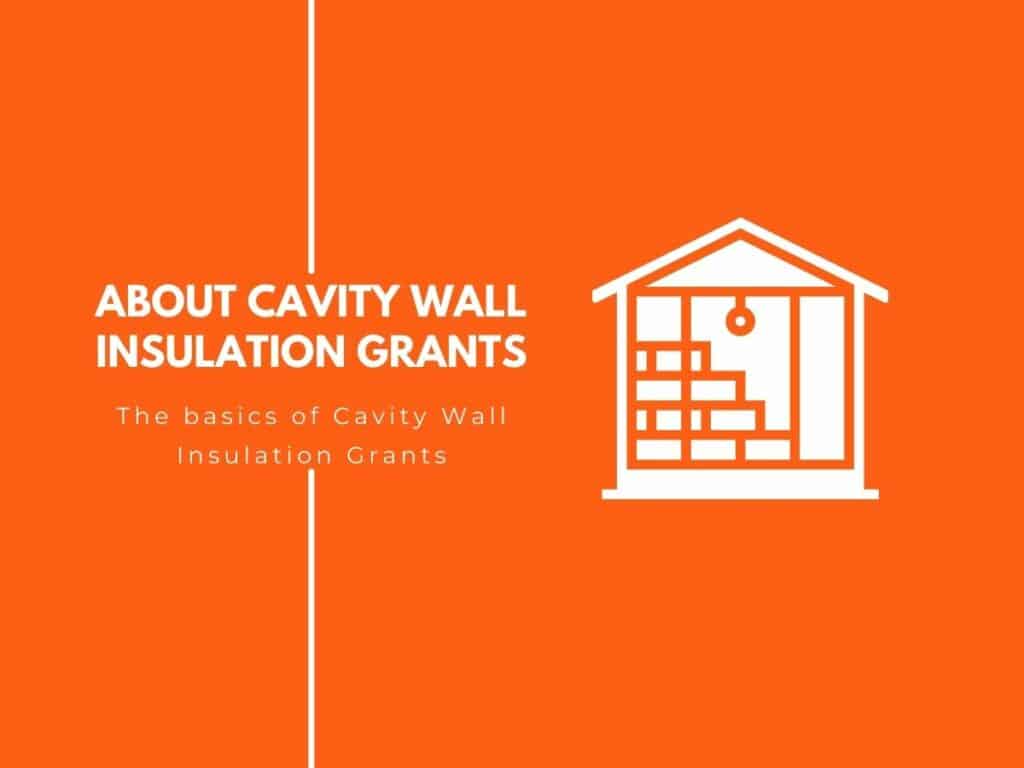The UK government has committed to a number of energy efficiency grant schemes to help it reach its Net Zero 2050 target. The two main schemes that include grants for cavity wall insulation are the Energy Company Obligation Scheme (ECO) with 4 billion worth of funding, and the Great British Insulation Scheme (GBIS) with 1 billion worth of funding. Both of these schemes are administered by Ofgem, and in most cases are free to eligible applicants.
The basics of Cavity Wall Insulation Grants
The two main insulation grant schemes available to applicants in the UK have different eligibility criteria. It’s important to understand the differences between the ECO4 and GBIS schemes to ensure you get the most out of your energy efficiency grant funding.
The fourth phase of the Energy Company Obligation (ECO) Scheme, ECO4 takes a whole-house approach to increase the energy efficiency of homes. Eligibility for the ECO4 scheme may include other heating measures as part of the grant application. Cavity wall insulation is compulsory as part of ECO4 if the home doesn’t have it already installed. ECO4 is the most generous grant scheme currently available, and Energy Saving Genie can check your eligibility in as little as 23 seconds. For more information on the ECO4 grant scheme, you can visit our dedicated ECO4 grant scheme page.
The Great British Insulation Scheme (formally called ECO+) can offer eligible applicants a single measure installation, where no other heating measures can be installed at the same time. This means that if you are eligible, cavity wall insulation can be installed, but no other insulation measure can be installed (e.g. loft insulation, external wall insulation or underfloor insulation). For more information please visit our dedicated GBIS page, or check your eligibility using our free grant checker.
What is Cavity Wall Insulation?
Exploring Cavity Wall Insulation
Not all homes have cavity wall insulation, as it only became common in houses built from the 1930s onwards (Prior to 1920, homes were mostly built with solid walls). If your house was built after the 1920s it is likely to have cavity walls, which is basically 2 separate walls with a gap in between. The outer wall is called the outer-leaf, and the inner wall is called the inner-leaf. The width of the gap is usually at least 40mm, however the width can vary depending on the property and how and when it was built.
A quick check to see if you have cavity walls is to check the outside of your building. If the bricks are all the same size and are laid lengthways, it’s likely that you have a cavity wall. If the brickwork is different sizes, this usually indicates that you have solid walls.
Even though cavity walls were common from the 1930’s, cavity wall insulation was only commonly installed in buildings from the 1990’s onwards. If your property was built between the 1930’s and 1990’s and hasn’t had cavity wall insulation installed, you could be eligible for a free cavity wall insulation grant.
Types of Cavity Wall Insulation Available
Cavity wall insulation material comes in three main types as follows:
- mineral wool – The original material, it first became popular in the 1950s. Mineral wool is created by heating and spinning igneous rocks into strands (similar to wool).
- polystyrene beads – Expanded polystyrene beads (EPS) are made of a carbon polymer that initially measure 0.5mm in diameter, but are then filled with air via a steaming process to increase their size to 3-5mm in diameter.
- ployurethane foam – Also known as PUR insulation, this heating technology has been available since the mid 80s and is present in newer buildings. It is a plastic carbon based formed into an inert polymer and is the highest energy rated insulator of all 3 materials
If you are eligible for a grant, a registered installer will determine the best option when they survey your property.
Understanding the importance of insulation
Insulation is an important energy saving measure to be installed, as it helps to trap heat inside your home in the winter months (as well as cool air in the summer). The energy saving trust estimates that about a third of all heat in an uninsulated home is lost through the walls. This means that your heating system needs to work harder to keep your home warm, increasing your costs and carbon footprint. Check your eligibility today for free cavity wall insulation using our free grant checker.
Why Install Cavity Wall Insulation?
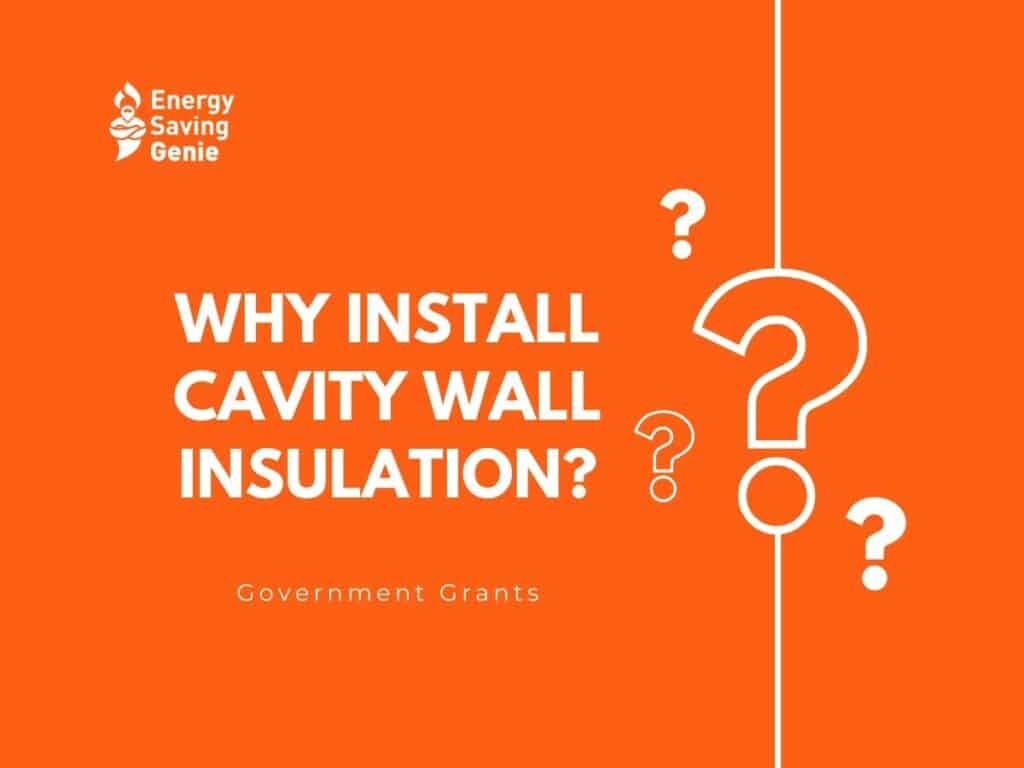
Benefits of Cavity Wall Insulation
Given how much heat can escape your home with uninsulated cavity walls, there are significant energy savings when installing cavity wall insulation. According to the Energy Saving trust, your annual bill savings can be anywhere from 125 for a mid-floor flat to 455 for a detached house*.
Another benefit is a reduction in your carbon footprint. The energy saving trust estimates that cavity wall insulation saves 305 kg of CO2 per year, up to 1,100 kg of CO2 for a detached house*.
*based on properties in England, Scotland and Wales
How does Cavity Wall Insulation reduce heat loss?
Cavity wall insulation increases the core temperature of your home by stopping heat escaping through your walls. If you have a home with cavity walls, there is a gap between the outside brick wall and inside brick wall. Filling this gap with the appropriate insulation material creates a thermal barrier, keeping you warm and cosy inside your home in the winter months.
Who Is Eligible for Free Cavity Wall Insulation
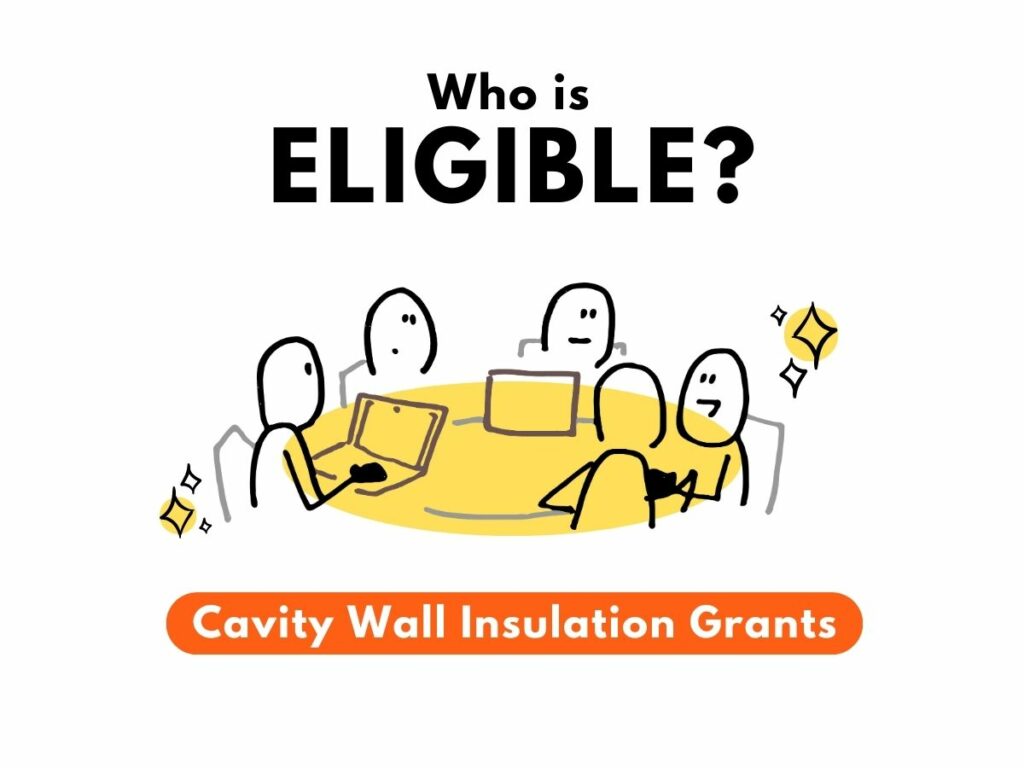
Energy Company Obligation Scheme (ECO) – ECO4 is the latest round of the ECO scheme, and any funding you receive is part of a ‘whole-house’ approach to increase energy efficiency of a home. An ECO4 grant may include other heating measures as part of the grant application, and cavity wall insulation installation is compulsory as part of ECO4 (if the home doesn’t have it installed already). The amount of funding you receive is based on factors such as the energy performance certificate (EPC) rating of your home, which benefits you receive and whether you are considered vulnerable. Visit our dedicated ECO4 page to find out more about this generous grant scheme, or apply now using our free grant checker.
Great British Insulation Scheme (GBIS) – GBIS is different to the ECO4 scheme included as only a single insulation measure is installed. The qualifying criteria is split into two categories for the GBIS, the ‘general’ group and the ‘low-income’ group. For further information on the Great British Insulation Scheme you can visit our page dedicated to the scheme.
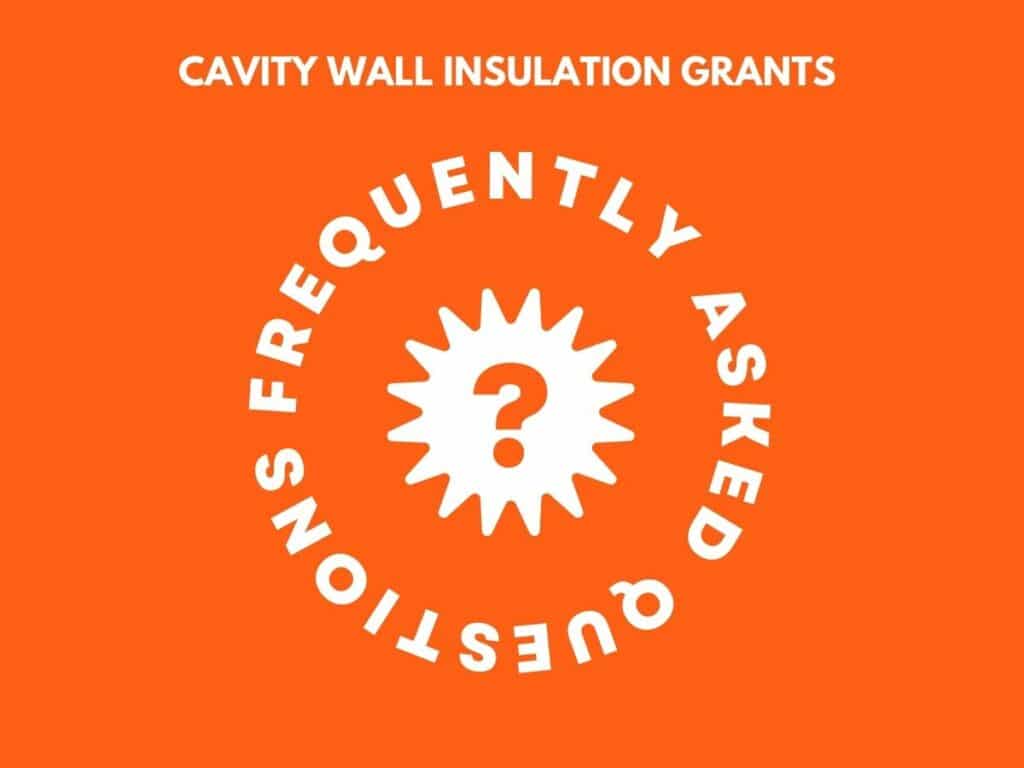
Frequently Asked Questions
Is cavity wall Insulation messy to install?
Cavity wall insulation is a simple and mess free energy saving measure, but should only be installed by a professional registered installer. The installer will drill holes into the wall of your home, and the insulation is pumped into the cavity.
Can I have cavity wall insulation installed if there is a damp problem in my walls?
If there is damp present in your walls, it is best to address it before installing cavity wall insulation. Without a dry space in your wall, the cavity wall insulation may not work as effectively.
How long does it take to install cavity wall insulation?
On average it will take half a day up to 2 days to install cavity wall insulation, depending on the size of your property.
Will I receive any warranties or guarantees for my cavity wall insulation grant?
Registered installers will typically provide a guarantee of 25 years for cavity wall insulation, which is supported by Trustmark (who are a government endorsed quality scheme). If you’d like more information on the types of guarantees provided you can visit the Trustmark website.
Can I get cavity wall insulation installed in a listed building?
Yes, cavity wall insulation can be installed in a listed building, however you may need to get permission from your local authority first.
Are cavity wall insulation grants really free?
Absolutely, if you qualify for either an ECO4 or GBIS grant you could be eligible for free government cavity wall insulation grant. Check your eligibility now via our free grant checker and start reducing your heating bill!
Do I have to own my property to be eligible for a cavity wall insulation grant?
No, but if you are a private tenant or housing association tenant you will need to get your landlords consent.
How long does cavity wall insulation last?
If done correctly by a registered installer, cavity wall insulation will remain an effective for the life of the building, requiring no further maintenance.
What if I’m not eligible for a cavity wall insulation grant?
Grant rules are changing all the time and new schemes are being introduced. Register your details with us, and we will let you know if any scheme changes impact your eligibility.



